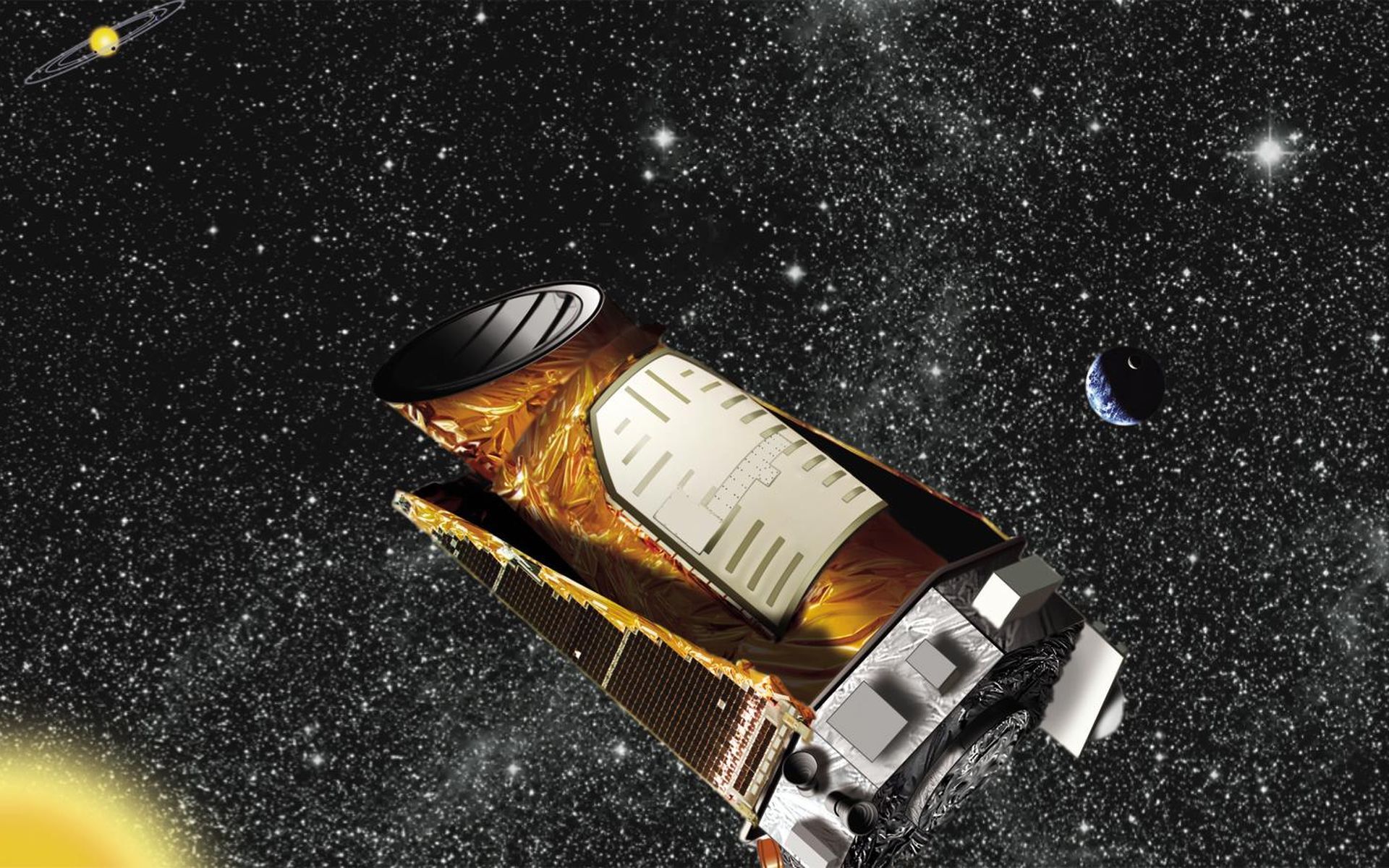
Later on Thursday afternoon, NASA will hold a press conference announcing a new discovery from its Kepler satellite, a telescope designed to spot planets orbiting other stars. The agency has kept its cards close to the chest, but it has said, "The discovery was made by researchers using machine learning from Google."
The press conference, which begins at 1 p.m. Eastern time, will be live-streamed on the NASA website. Although the phone line for the event will be limited to journalists only, the public can ask questions on Twitter using #AskNASA.
There hasn't been much guesswork yet about what the discovery might be, although it's certainly likely to be related to exoplanets, the satellite's main target. Popular Mechanics speculates: "Likely, NASA teamed up with Google to build an algorithm for finding more exoplanets inside that untouched Kepler data, and this Thursday's announcement will reveal the first results. There's a good chance Google's machine-learning algorithm managed to find many more exoplanets hiding in Kepler's data, and the space telescope has already found more than 2,000."
That 2,515 total (from both the original Kepler mission and its reincarnation as K2 after mechanical failures hobbled it) represents only confirmed exoplanets, with thousands more identified as candidates needing verification. Scientists believe 30 of the final tally are located in their star's habitable zone, the range in which water isn't frozen but is still cool enough that it doesn't all evaporate away.
NASA did state in an email to Newsweek that the announcement is connected to a paper being published at 1 p.m., when the press conference begins, but the agency has not made its text available to journalists to run by experts in the field, as is usually the case.
The panel for the press conference features Paul Hertz, the director of NASA's astrophysics division, which includes Earth-like exoplanets; Christopher Shallue, a software engineer focusing on artificial intelligence at Google; Andrew Vanderburg, an astronomer at the University of Texas at Austin who has been focusing on data from the K2 portion of Kepler's life; and Jessie Dotson, a NASA astrophysicist on the K2 mission.
Spoiler alert: Whatever the announcement turns out to be, it's not going to be confirming the existence of Nibiru, conspiracy theorists' favorite planet. If there were any such planet, astronomers would have seen it a decade ago, and by now humans with no specialized equipment would also be able to see it.
Uncommon Knowledge
Newsweek is committed to challenging conventional wisdom and finding connections in the search for common ground.
Newsweek is committed to challenging conventional wisdom and finding connections in the search for common ground.
About the writer
Meghan Bartels is a science journalist based in New York City who covers the science happening on the surface of ... Read more
To read how Newsweek uses AI as a newsroom tool, Click here.








